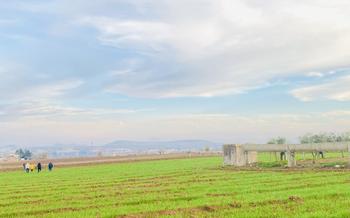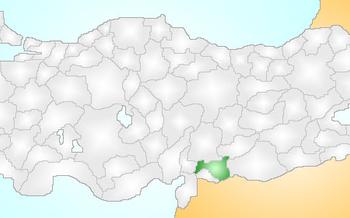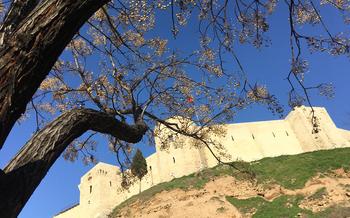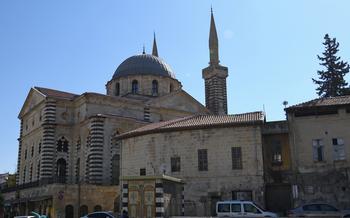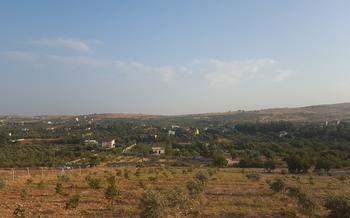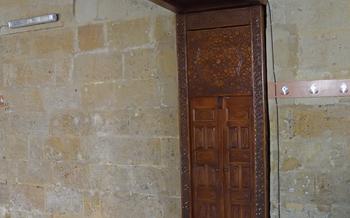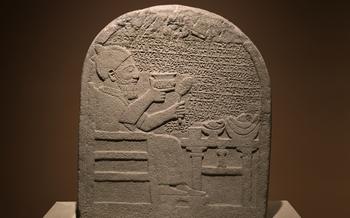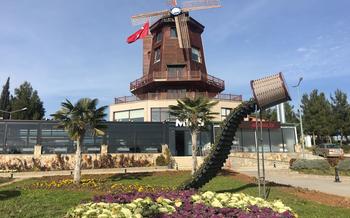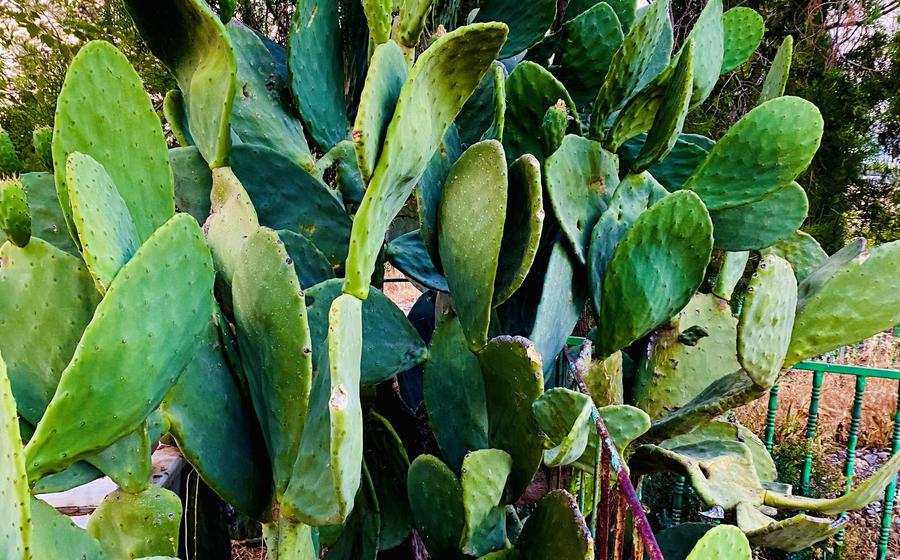
Hamam Muzesi (Bath Museum)
- History of the Hamam Muzesi
- Location and Accessibility
- Architectural Design
- Traditional Bathing Rituals
- Cultural Significance
- Interactive Exhibits
- Guided Tours and Workshops
- Hours of Operation and Admission Fees
- Photography and Videography
- Souvenir Shop and Gift Options
- Accessibility for Visitors with Disabilities
- Nearby Accommodations and Dining Options
- Additional Historical Sites and Attractions
- Insider Tip: For an unforgettable experience, plan your visit to the Hamam Muzesi during the annual Gaziantep Bath Festival. Held in the summer months, this vibrant festival brings the museum to life with traditional bathing rituals, live music, and cultural performances. Immerse yourself in the sights, sounds, and aromas of a bygone era as you witness the revival of ancient bathing traditions and celebrate the rich heritage of Turkish hammams.
History of the Hamam Muzesi
Immerse yourself in the rich history of the Hamam Muzesi, a testament to the enduring legacy of Ottoman bathhouse traditions. Originally constructed during the Ottoman period, this meticulously preserved structure stands as a symbol of Turkish bathing culture. Its architectural design showcases the characteristic Ottoman style, featuring intricate tilework, graceful arches, and soaring domes. Beyond its architectural significance, the Hamam Muzesi offers a glimpse into the social and cultural fabric of Turkish society, where hamams served as gathering places for various rituals and events, fostering a sense of community and well-being. The restoration efforts undertaken to transform this historic bathhouse into a cultural heritage site have breathed new life into its ancient walls, inviting visitors to step back in time and experience the essence of traditional Turkish bathing rituals.
Location and Accessibility
The Hamam Muzesi is strategically situated in the heart of Gaziantep's old city, within walking distance of numerous historical sites and attractions. Its proximity to the Gaziantep Castle, the Archaeological Museum, and the Great Mosque makes it an ideal stop on a cultural tour of the city. Visitors can easily explore these landmarks on foot, immersing themselves in the rich history and culture of Gaziantep.
To reach the Hamam Muzesi, visitors can take advantage of the city's public transportation system, which offers convenient bus routes to the old city. Alternatively, guided tours are available that include the Hamam Muzesi as part of their itinerary, providing a hassle-free way to explore the city's highlights. The museum is wheelchair accessible, ensuring that visitors with disabilities can fully experience its wonders.
Architectural Design
The Hamam Muzesi is a stunning example of traditional Ottoman architecture, showcasing a harmonious blend of functionality and aesthetics. Its striking domes and arches create a sense of grandeur, while the intricate tilework adorning the walls and ceilings adds a touch of elegance and sophistication. These architectural elements are not merely decorative but also serve a practical purpose, ensuring proper ventilation and natural lighting throughout the bathhouse. The use of natural stone, marble, and wood further enhances the overall aesthetic, creating a warm and inviting atmosphere.
Recent restoration efforts have meticulously preserved the original architectural details, ensuring that visitors can experience the Hamam Muzesi in its full glory. The skillful restoration work has breathed new life into this historic landmark, allowing it to continue serving as a testament to the rich architectural heritage of the Ottoman Empire.
Traditional Bathing Rituals
Hamams, or traditional Turkish baths, were not merely places for cleansing but also held deep cultural significance in Turkish society. The bathing rituals that took place within these bathhouses were an integral part of Turkish culture, embodying both physical and spiritual purification.
The process began with the heating of water in large cauldrons, creating steam that filled the air. Visitors would enter the hot room, where they would perspire profusely, allowing their pores to open and release toxins. This was followed by a vigorous scrubbing with a kese, a coarse mitt made from horsehair or silk, which removed dead skin cells and impurities.
After the scrubbing, visitors would rinse off with warm water and proceed to the cold room, where they would cool down and relax. The contrast in temperatures helped to stimulate circulation and invigorate the body. Soap, made from olive oil and scented with essential oils, was used to cleanse the skin, leaving it soft and supple.
The bathing rituals were often accompanied by massages and other treatments designed to promote relaxation and well-being. Hamams were also social spaces, where people would gather to socialize, exchange news, and celebrate special occasions such as weddings and engagements. The communal nature of these bathhouses fostered a sense of community and belonging.
Cultural Significance
The Hamam Muzesi holds immense cultural significance, deeply embedded in the fabric of Turkish society for centuries. These traditional bathhouses have served as focal points for various social events, transcending their primary function of cleansing. Weddings, engagements, and religious ceremonies have found their stage within the walls of hamams, symbolizing important milestones in the lives of individuals and communities.
Beyond their social functions, hamams have long been recognized for their therapeutic and restorative qualities, promoting physical and mental well-being. The combination of heat, steam, and massage techniques has created a holistic experience that rejuvenates both body and mind. This therapeutic aspect has made hamams an integral part of Turkish culture, contributing to a healthy and balanced lifestyle.
The cultural significance of hamams has been further solidified by their recognition as a UNESCO Intangible Cultural Heritage. This prestigious designation underscores the global importance of these bathhouses, highlighting their unique contribution to world culture. It serves as a testament to the enduring legacy of hamams and their ongoing relevance in contemporary society.
Interactive Exhibits
The Hamam Muzesi is not just a static display of historical artifacts; it also features a range of interactive exhibits that bring the past to life and provide visitors with a deeper understanding of the hammam experience. These exhibits utilize multimedia displays, historical artifacts, and hands-on activities to engage visitors and enhance their learning experience.
Through these interactive elements, visitors can explore the history of hamams, learn about the traditional bathing rituals, and gain insights into the architectural and cultural significance of these bathhouses. The exhibits provide a multisensory experience that allows visitors to immerse themselves in the hammam culture and appreciate its enduring legacy.
One of the highlights of the interactive exhibits is a virtual reality experience that transports visitors back in time to the Ottoman era, allowing them to experience the sights, sounds, and smells of a traditional hammam. This immersive experience offers a unique perspective on the social and cultural aspects of hammam culture, providing visitors with a deeper understanding of the role these bathhouses played in Turkish society.
Guided Tours and Workshops
Guided tours, led by knowledgeable guides, provide visitors with an immersive and in-depth experience at the Hamam Muzesi. These tours offer a deeper understanding of the history, architecture, and cultural significance of the bathhouse. Visitors can gain insights into the traditional bathing practices and rituals of the past, as well as the social and cultural importance of hamams in Turkish society.
Additionally, the Hamam Muzesi offers unique opportunities for visitors to participate in traditional bathing rituals or workshops. These hands-on experiences allow visitors to immerse themselves in hammam culture and gain a firsthand understanding of the cleansing and relaxation rituals that have been practiced for centuries.
Whether through guided tours or hands-on workshops, the Hamam Muzesi provides an exceptional opportunity for visitors to connect with the past and gain a deeper appreciation for the cultural significance of hamams in Turkey.
Hours of Operation and Admission Fees
The Hamam Muzesi operates throughout the week, welcoming visitors from Tuesday to Sunday. Its doors remain closed on Mondays, providing an opportunity for maintenance and preservation efforts. Visitors can step into the fascinating world of traditional Turkish baths during specific hours each day. From Tuesday to Saturday, the museum opens its doors from 09:00 to 17:30, allowing ample time to explore the intricate architecture, exhibits, and cultural significance of the Hamam Muzesi. On Sundays, the museum maintains a slightly shorter schedule, operating from 09:00 to 16:30, ensuring a comfortable and unhurried visit.
Admission fees to the Hamam Muzesi are designed to make this cultural gem accessible to both local and international visitors. The entrance ticket for local visitors is an affordable 10 Turkish Lira, while international visitors can gain entry for 20 Turkish Lira. The museum also offers a 50% discount for students and disabled individuals, demonstrating its commitment to inclusivity and accessibility.
To further enhance the visitor experience, the Hamam Muzesi participates in the Gaziantep Museum Pass program. This pass offers discounted admission to multiple museums and historical sites in the city, providing a cost-effective way to explore Gaziantep's rich cultural heritage. Visitors can purchase the pass at any participating museum, including the Hamam Muzesi.
It is always advisable to check the museum's official website or contact them directly for the most up-to-date information regarding hours of operation, admission fees, and any special events or exhibitions.
Photography and Videography
Photography and videography are permitted within the Hamam Muzesi, allowing visitors to capture the essence of this unique cultural heritage site. Visitors are encouraged to take photos and videos for personal use, as a way to document their visit and share their experiences with others. However, it is important to respect the privacy of other visitors and the preservation of the museum's artifacts. Flash photography and tripods are not allowed, and visitors should refrain from taking photos or videos of other visitors without their consent. By following these guidelines, visitors can ensure that they capture memorable images while respecting the sanctity of the Hamam Muzesi.
Souvenir Shop and Gift Options
Within the Hamam Muzesi, visitors will find a charming souvenir shop that offers a delightful array of mementos and gifts to commemorate their visit. From traditional Turkish crafts to replicas of historical artifacts and locally-made products, the shop provides a unique opportunity to support local artisans and businesses while taking home a piece of Gaziantep's rich cultural heritage.
The souvenirs available at the Hamam Muzesi are not merely decorative items but represent the essence of the museum's history and significance. Visitors can choose from intricately designed pottery, handwoven textiles, and exquisite jewelry inspired by the motifs and patterns found within the bathhouse.
By purchasing a souvenir from the Hamam Muzesi, visitors not only take home a tangible reminder of their visit but also contribute to preserving and promoting the cultural traditions associated with this historic landmark. The shop's offerings serve as a bridge between the past and the present, allowing visitors to carry a piece of Turkish heritage with them wherever they go.
Accessibility for Visitors with Disabilities
The Hamam Muzesi is committed to providing an inclusive and welcoming environment for all visitors, including those with disabilities. The museum features accessible pathways, ramps, and elevators that enable visitors to navigate the premises with ease. Additionally, the museum staff is well-equipped to assist visitors with specific needs and can provide any necessary assistance to ensure a comfortable and enjoyable visit. Visitors with disabilities are encouraged to reach out to the museum's staff in advance to inquire about any special arrangements or assistance that they may require. The museum's dedication to accessibility ensures that everyone can explore and appreciate the rich history and cultural significance of the Hamam Muzesi.
Nearby Accommodations and Dining Options
To fully immerse yourself in the history and culture of Gaziantep, consider extending your stay and exploring the city's vibrant accommodation and dining scene. A range of options awaits visitors, from charming traditional Turkish houses to modern hotels, catering to different preferences and budgets.
For a truly authentic experience, opt for a stay in a traditional Turkish house, where you can immerse yourself in the local lifestyle and architecture. These houses often feature intricate tilework, cozy courtyards, and a glimpse into the past.
When it comes to dining, Gaziantep is a culinary paradise, renowned for its rich flavors and unique dishes. From traditional Turkish cuisine to local specialties, the city offers a feast for the senses. Savor the delectable flavors of kebabs, baklava, and the famous Gaziantep lahmacun, a crispy flatbread topped with minced meat and spices.
Explore the city's culinary gems by venturing into the local markets, where you can find fresh produce, spices, and traditional delicacies. Indulge in the vibrant atmosphere as you interact with friendly vendors and discover hidden culinary treasures.
Gaziantep's culinary scene is not just about food; it's an integral part of the city's cultural identity. By savoring the local flavors, you'll gain a deeper understanding of the region's history and traditions. So, embark on a culinary adventure in Gaziantep, and let your taste buds guide you through the city's rich cultural tapestry.
Additional Historical Sites and Attractions
Beyond the Hamam Muzesi, Gaziantep offers a wealth of historical sites and attractions that provide a glimpse into the city's rich cultural heritage. Visitors can explore the Gaziantep Castle, a majestic fortress that stands as a testament to the city's ancient past. The Zeugma Mosaic Museum houses an impressive collection of Roman and Byzantine mosaics, showcasing the artistic legacy of the region. The Tarihi Gaziantep Hamam Müzesi offers a unique perspective on the city's bathing culture, with its well-preserved hammams and artifacts. The Gaziantep Savaş Müzesi commemorates the city's role in the Turkish War of Independence, offering a poignant tribute to its heroes.
Crafting an itinerary that encompasses multiple sites allows visitors to delve deeper into Gaziantep's history and culture. A suggested walking route could start at the Hamam Muzesi, leading to the Gaziantep Castle and the Zeugma Mosaic Museum. From there, visitors can stroll through the atmospheric Old City, exploring its traditional markets and hidden gems. The Tarihi Gaziantep Hamam Müzesi and the Gaziantep Savaş Müzesi can be conveniently added to the route, providing a comprehensive overview of the city's heritage.
